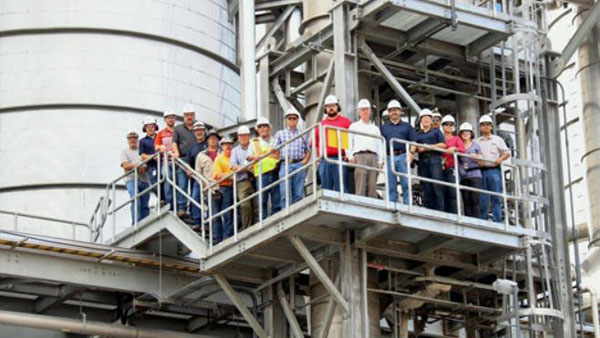GP's Cellulose Mill Turns Investment Into Competitive And Environmental Advantage in Florida
Georgia-Pacific / GP's (Atlanta, Ga., USA) Foley Cellulose mill in Perry, Florida recently completed an $84 million investment that's making the mill more energy efficient and is reducing its groundwater usage through the installation of new Black Liquor Evaporators (BLE).
BLEs evaporate water vapor from byproducts of the pulping process and are a critical component to this operation. To ensure that GP was reaching the efficiencies of today's technology, it was determined that the four previous sets of its BLEs would be replaced by late summer.
Now that installation is complete, the mill is already reaping the benefits of the massive new system. It's reporting nearly 40% improvement in steam economy, which is how the mill generates its energy. That translates to more energy that the mill can self‐generate and less energy it needs to purchase. The new BLEs have also reduced the mill's emissions by up to nearly 20% and saved approximately two million gallons of water per day, which is helping the mill significantly improve its environmental impact.

The completion and successful startup of the BLEs had another critical impact on the environment – the successful completion of the mill's Fenholloway Water Quality project. It's designed to convert the Fenholloway's designation from an "industrial" river and return it to fishable‐swimmable standards, among other natural restoration imperatives. This $350 million initiative currently underway is one of the most ambitious environmental restoration projects in Florida conservation history.
"Our new waste water treatment system was designed based on efficiencies that were achieved with our new BLEs," said Chet Thompson, Fenholloway Project Leader. If we didn't start up on time and run as designed, we risked not meeting the goals and delaying the Fenholloway project."
But the Foley team pulled through – the BLE installation took two years of planning, intense teamwork and knowledge‐sharing that reached across several mills. The massive size of the BLEs equally matched the enormous amount of effort required to operate them. Placement of the structures was just half of the job and ensuring that they run safely and properly is the other half that requires a whole team committed to their work and each other.
"I am very impressed with the Foley team and how they worked together to commission the BLEs. They deserve to celebrate this great accomplishment," said Chad Harrod, Project Leader and Senior Engineer.
It's clear this effort is helping to push GP's Foley mill into a new territory of innovation and confirms they are committed to securing the mill's future with both a competitive and an environmental advantage.
TAPPI
http://www.tappi.org/

